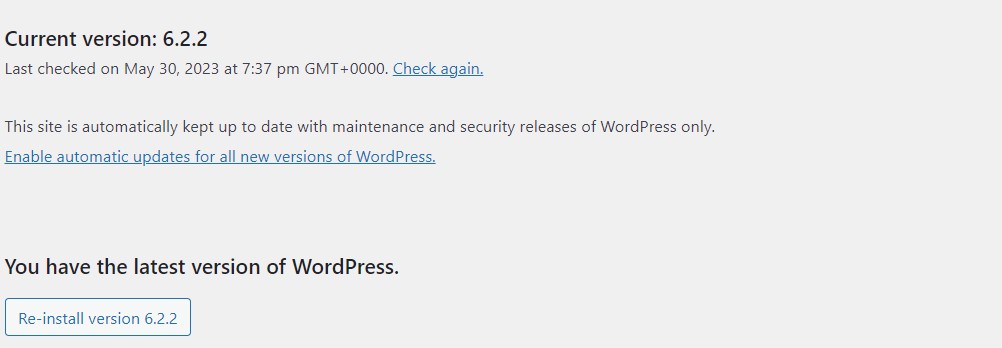As a website owner, one of the most important aspects of maintaining your online presence is keeping your site free from malware. Malware can wreak havoc on your website, causing everything from slow load times to complete system failures.
If you’re running your site on WordPress, there are a few best practices you can follow to help prevent malware from infecting your site.
In this article, we’ll cover some of the most effective preventative measures you can take to keep your WordPress site malware-free.
From keeping your WordPress installation up-to-date to using a reputable web host, we’ll give you the tools you need to keep your site secure and running smoothly.
So, whether you’re a seasoned WordPress pro or just getting started with building your online presence, read on to learn how to protect your website from malicious attacks.
Why preventing malware is crucial for your website
Malware is any software designed to harm or gain unauthorized access to a computer system.
When your website is infected with malware, it can cause significant damage to your website’s functionality. It can also be used to steal sensitive data like customer information, login credentials, and banking details.
Furthermore, if your website is hacked, it can damage your online reputation, and your search engine rankings can take a hit. That’s why it’s essential to take preventative measures to keep your WordPress site malware-free.
Common ways WordPress sites get infected
The most common ways WordPress sites get infected with malware include:
1. Outdated software:
When you don’t keep your WordPress installation up-to-date, it leaves your site vulnerable to malware attacks. Hackers exploit vulnerabilities in outdated software to gain access to your website.

2. Nulled plugins and themes:
Nulled plugins and themes are pirated versions of paid software. They are available for free download on various websites. However, downloading and using nulled plugins and themes is risky as they often contain malware. So you should avoid from nulled themes and plugins .
3. Weak passwords:
Weak passwords make it easy for hackers to gain access to your website. They use automated tools to crack weak passwords, and once they have access, they can inject malware into your website.
Best practices for preventing malware infections
Now that you know how WordPress sites get infected let’s discuss the best practices for preventing malware infections.
Keeping your WordPress site up-to-date
Keeping your WordPress site up-to-date is crucial for preventing malware infections. WordPress releases regular updates to fix bugs and security vulnerabilities. When you don’t update your website, it becomes vulnerable to malware attacks.
To keep your WordPress site up-to-date, log in to your WordPress dashboard regularly and check for available updates. Update your WordPress core, plugins, and themes immediately when updates are available.
Security plugins for WordPress
Security plugins are one of the best ways to keep your WordPress site malware-free. They help prevent malware infections by scanning your website for vulnerabilities, blocking malicious IP addresses, and monitoring your website for suspicious activity.
Some popular security plugins for WordPress include Wordfence, Sucuri Security, and iThemes Security. Install a security plugin that suits your needs and configure it according to your website’s requirements.
Backup your website regularly
Backing up your website regularly is essential for preventing data loss in case of a malware attack. When you have a backup of your website, you can easily restore your website to a previous version in case of a malware infection.
There are various backup plugins available for WordPress that can help you schedule automatic backups. Some popular backup plugins include UpdraftPlus, BackupBuddy, and VaultPress.
Scanning your site for malware
Regularly scanning your website for malware can help you detect and remove malware before it causes significant damage to your website. Malware scanners check your website for suspicious code, infected files, and other malware-related issues.
Some popular malware scanners for WordPress include Sucuri SiteCheck, Quttera, and MalCare. Install a malware scanner that suits your needs and scan your website regularly.
What to do if your site is infected with malware
If your WordPress site is infected with malware, it’s essential to take immediate action to prevent further damage to your website. Here are the steps you should take:
1. Quarantine your website:
Quarantine your website immediately to prevent further spread of malware. You can do this by taking your website offline or restricting access to your website.
2. Remove malware:
Remove malware from your website by using a malware scanner or by manually removing the infected files. You can hire us for WordPress malware removal service.
3. Restore your website:
Once you’ve removed malware from your website, restore your website to a previous version using a backup.
4. Secure your website:
Secure your website by updating your WordPress installation, plugins, and themes. Install a security plugin and configure it according to your website’s requirements. If your site is blacklisted by google, you can submit reconsider request.
Conclusion: Stay vigilant to keep your site malware-free
Preventing malware infections is crucial for maintaining the security and functionality of your WordPress site. By following the best practices discussed in this article, you can keep your WordPress site malware-free. Stay vigilant and take regular backups to prevent data loss in case of a malware attack. Remember, prevention is always better than cure.
